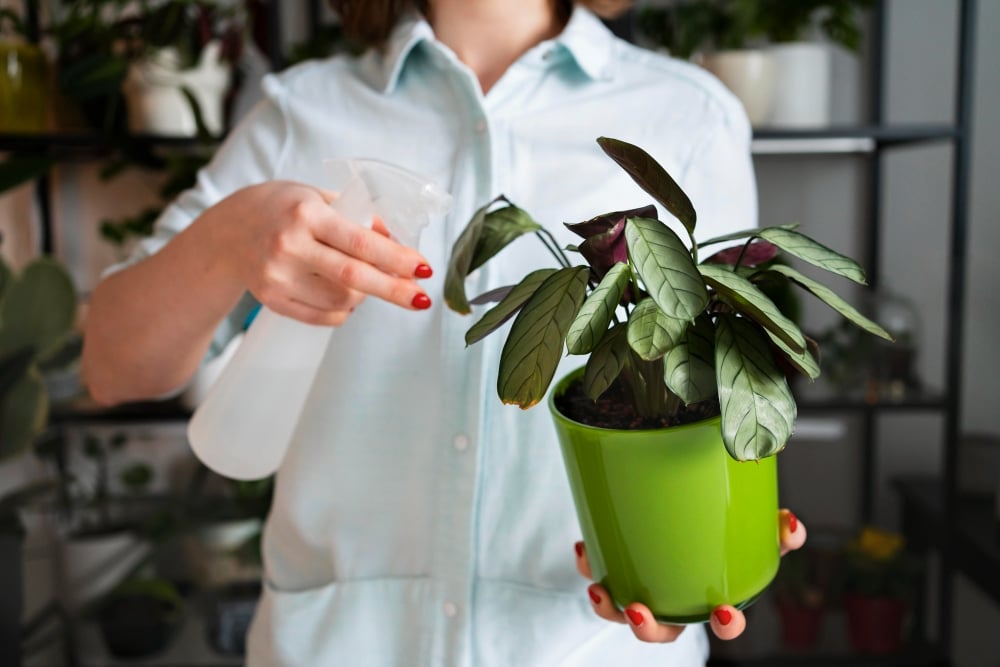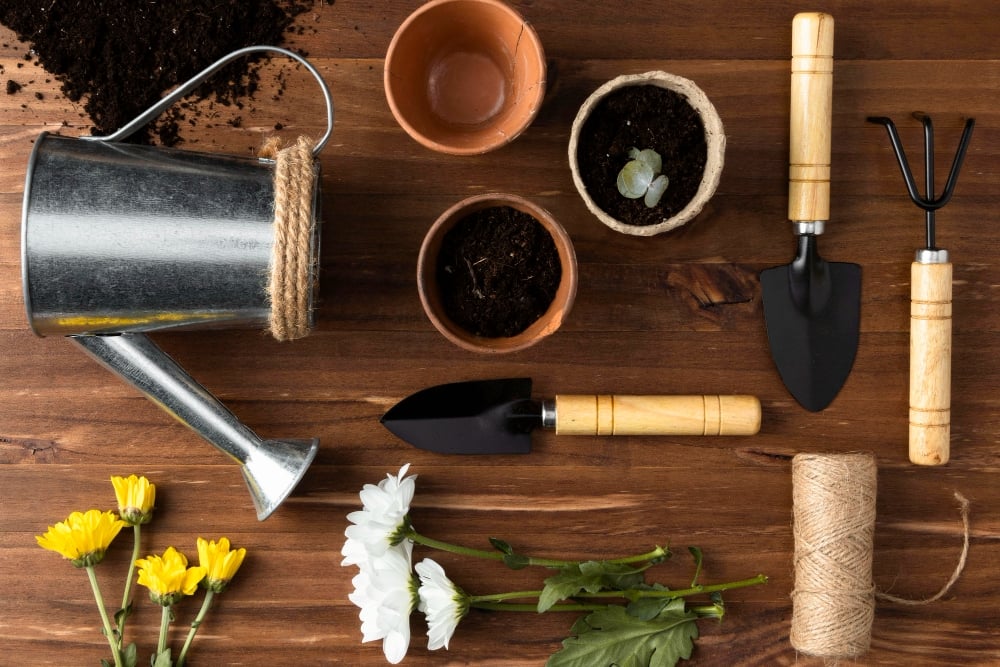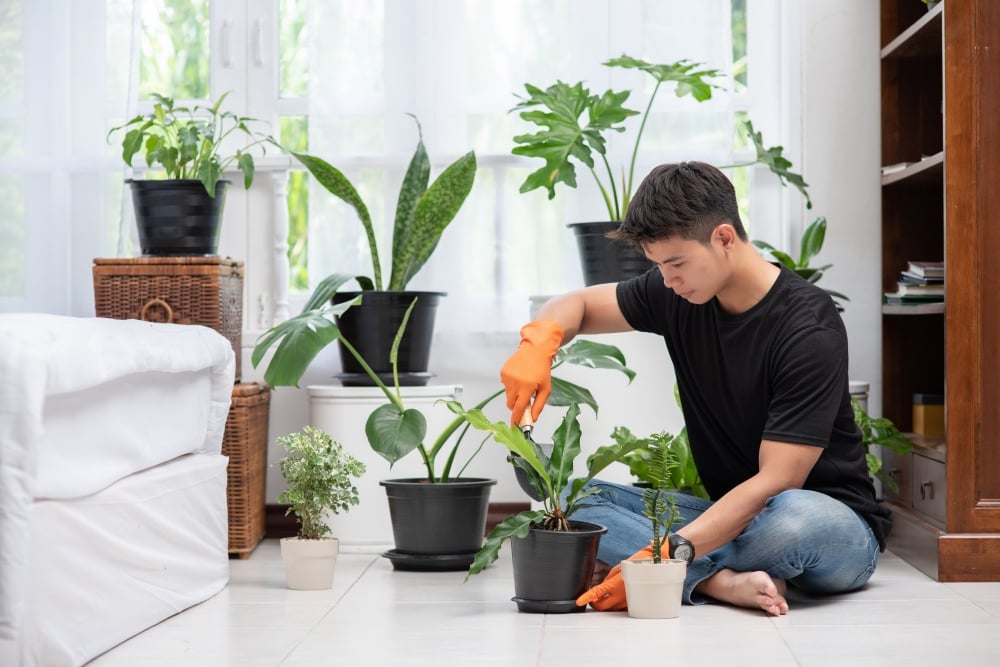Beginning your home garden is one of the most rewarding things that you can do. According to studies, caring for plants has a lot of advantages for one’s well being – the physical exercise when gardening contributes to a healthy weight and blood pressure levels while the interaction with plants improves one’s mood and mental health.
Home gardening is increasingly becoming popular with a lot of people choosing to do it as a hobby. But little do they know that there are many other reasons why home gardening is one of the best activities to do now. For many, it is a way of going green and healthy and an opportunity to have their own household food production and local food systems that would not cost as much as what you can buy in the grocery stores.
- Start small and consider what to plant
- Prepare the gardening tools and supplies
- Pick the perfect spot
- Clear the ground and get some good soil
- Fertilizing the garden
- Watering the garden
- Organic Pest Control Solutions
- Pick your plants
Before you dig into a new and exciting gardening adventure at home, find out what home gardening means and what it entails.
What is home gardening?
According to Activif, Home gardening is the act of turning an outside space into a productive and functional area for the family, as well as a home for plants and animals that have otherwise lost their homes to urban development.
Home gardening often involves vegetable gardening- growing fruits, vegetables, and herbs for personal consumption, as well as creating aesthetics and diversity for bird and insect life with attractive flower beds. It also requires gardening knowledge, ongoing nurturing of plants, maintenance skills, and consistent improvement.
For some, home gardening is a fun way of getting their hands dirty either by planting fragrant florals or starting a vegetable garden. Home gardening is beneficial for a variety of reasons.

Here are some of the long-term benefits of home gardening.
1. Home gardening burns a lot of calories
Did you know that home gardening is considered a moderate-intensity exercise? According to the Centers for Disease Control and Prevention (CDC), you can burn about 330 calories doing one hour of light gardening at home, which is more than walking at a moderate pace for the same period of time.
Gardening can be as good a workout as spending time in the gym. If you want to improve your fitness without leaving the comfort of your own home, then try gardening. While you are gardening, you will be pushing a wheelbarrow, digging, walking up and down while carrying things, reaching, and cutting – all of these actions are a form of exercise.
2. Home gardening can lower your blood pressure
By just doing 30 minutes of moderate-level exercise for a number of days a week can prevent and control high blood pressure. In fact, The National Heart, Lung, and Blood Institute recommends gardening for 30-45 minutes as an example of how to hit that recommended amount.
3. Spending time outdoors is good for the bones
When you are outdoors and your skin is exposed to the sun, it signals your body to produce vitamin D, which helps in absorbing calcium that is essential for bone formation.
You have to remember though that it is also important to apply sunscreen if you are planning on spending more time in the sun to lower your risk of skin cancer.
4. Growing your fruits and vegetables can help you eat healthier
Aside from improving your physical health, gardening also enables you to grow your own food and eating fresh vegetables and fruits. Imagine the perks of eating your own produce! Gardening helps you develop a good habit of eating enough fruits and vegetables.
5. Home gardening can relieve stress
According to a 2017 meta-analysis in Preventive Medicine Reports, gardening is positively correlated with a reduction in depression and anxiety symptoms.
Home gardening is said to help the body relax and reduce the amount of cortisol, thus reducing feelings of stress.
In fact, some hospitals even use flowers and plants as part of their rehabilitation for people recovering from injuries, strokes, surgeries, and other health conditions.
These benefits can also extend outside of a healthcare setting especially now that people are so busy and hyper connected with digital media all over the place. Having home gardens and caring for your own plants can serve as your respite from the daily stress of life.
6. Home gardening can make you feel happier
Home gardening does not only boost your mood but also improves your quality of life. Plants can help you develop a more positive outlook.
In growing your plants, you give it time and effort and you hope that you will be able to grow something green, something real, and beautiful. This helps you develop a similar outlook in life where you strive hard and become hopeful in achieving your goals and dreams.
Meanwhile, if you are new to gardening, it can be difficult to know where to start.

Here is a step-by-step guide to help you make the most of your space at home.
1. Start small and consider what to plant
Avoid creating a massive garden from day 1 so as not to become overwhelmed. Choose a small space to work with and expand as you become more confident and comfortable with your skills.
You also have to ask yourself which type of garden do you want to create at home – a vegetable garden? An herb garden or a flower garden? If you pick vegetables and herbs, make sure to plant the ones that your family will usually use like tomato plants, beans, and pepper.
Meanwhile, if you want flowers, decide whether you want those that bloom most of the summer or those that have a shorter time to bloom. Remember, each one has maintenance requirements, so pick what you really want and are willing to spend time on.
2. Prepare the gardening tools and supplies
When starting a home garden for the first time, having the right tools will make a big difference. You just have to remember that whether you shop in garden centers or online, it can get easy to get caught up in all the new gardening tools that you will see.
Just focus on basic, quality, durable tools. If you want to start with a few tools, the basics that you would need are the hand trowel, pruners, and shovel. But as you go on with your home garden, you will begin to figure out what you would really need.
For preparing and digging the garden bed, you will need a hand trowel, hand cultivator, garden fork, garden shovel, garden hoe, and garden rake. Meanwhile, for pruning, deadheading, and harvesting, you will need gardening gloves, hand pruners, garden scissors, and for watering, you need to have a garden hose, soaker hose, and watering can.
Buying these tools is not enough, you have to remember that they also need proper maintenance. Digging tools need an occasional coating of oil to prevent blades or tines from rusting. To sharpen digging tools, you need a metal file on both the front and back edges of the blade, working at a shallow angle. Pruners and shears can be sharpened by using a whetstone or sharpening stone that is appropriate to the size of the blade. Always check if there are any worn-out parts that need replacing.
3. Pick the perfect spot
If you are planning to grow vegetables and flowering plants, you need to pick a spot that gets about 6-8 hours of sunshine everyday. So, you need to observe your yard throughout the day to identify the best spot.
In case you do not know how many hours of sun your chosen spot gets, you can use a sun calculator.
Pick a flat spot as well so it would be easier and less time-consuming for you to manage. It is also important for you to avoid placing your vegetable garden next to tall trees as the roots may interfere with the success of your home garden.
4. Clear the ground and get some good soil
Once you have identified the spot, you need to clean the area. Get rid of weeds and sod in the area you plan to plant.
Meanwhile, if you are planning to get serious about home gardening, it is important that you know your soil type. The soil provides the plants with vital nutrients, water, and air that they require for healthy growth and development.
There are six types of potting soil which include clay soil, sandy soil, silty soil, peaty soil, chalky soil, and loamy soil. Each has different properties and it is important to know these to be able to come up with the best choices.
You can determine what soil you are working with by grabbing some soil, wetting it, and forming a ball. It is said that the soil that crumbles or does not hold shape is sandy, the soil that’s slick and stays tight is clay, and those that form a loose ball is loamy.
Most gardeners say that plants do best in loamy soil, which has a proper balance of clay, silt, and sand and provides good drainage. If your soil is clay or sandy, add soil amendments, such as compost or peat moss, to add nutrients and correct its structure.
If the soil is quite compacted, you have your work cut out for you. You should loosen the soil so the plants can grow easily and so that it also drains well. Till the soil with a broad fork, a tiller, or a regular digging fork.
5. Fertilizing the garden
Plants must have light, moisture and nutrients to grow healthy. The sun provides light, moisture comes from rainfall or irrigation while nutrients come from fertilizers, compost or manure.
If plants are not growing well, fertilizing them will help only if a lack of nutrients is the cause of the problem. Keep in mind that plants grown in poorly drained soils, in excessive shade, or in competition with tree roots will not respond to fertilizer.
There are two types of fertilizers – organic and inorganic. Examples of organic fertilizers include manure (poultry, cow or horse), bone meal, cottonseed, or other naturally occurring materials. On the other hand, inorganic fertilizers are man-made products and usually have a higher nutrient content.
6. Watering the garden
Make sure that you have easy access to water nearby. If you do not have a tap that is right next to your intended garden space, you will need to invest in a long hose with a control nozzle. Watering your garden daily is important, and if you plan to do all your watering with a watering can, you might get frustrated with all the back and forth.
When watering the plants, always remember to focus on the root zone, water only when needed, water deeply and thoroughly, water in the morning, mulch everything, and use the right tool.
7. Organic Pest Control Solutions
We all know that no garden is totally free of pests and diseases. There are fungal infections, caterpillars, beetles, dogs, and many more but you can minimize the damage by using organic pest control.
What is organic pest control? It is a method of protecting your home garden against disease and predators by using organic materials and avoiding the use of synthetic chemical products.
Remember, not all crawling and flying insects are bad for your garden. Ladybugs, praying mantis, hoverfly, lacewings, honeybee, and dragonfly are some of the beneficial insects, so do not kill them if you have them in your home garden.
Don’t forget to remove dead leaves, fallen fruit, and other debris that provides refuge for pests. This will help prevent infestations. Also, remove and throw away infested plants and avoid adding them to your compost pile.
You may also opt to use a homemade insecticide, such as salt spray, mineral oil, or garlic spray. These natural insecticides fight off pests without harming your plants, and even yourself. Just remember to reapply these natural garden pesticides frequently, especially during rainy days.
8. Pick your plants
Buying starter plants is the quickest, easiest way to start your home garden since you do not have to wait for the plant to grow and because it also provides the most certainty.
With starter plants, you can save a lot of time. You can begin gardening weeks or months after seed-sowers and still harvest about the same time. It’s an ideal choice for most of a busy gardener’s needs, however, it is considered as the most expensive planting option.
Meanwhile, if you want to grow your own garden from scratch, there are a lot of plants that you can search on the internet and are available for purchase. Here are a few easy-to-grow plants for beginners:
- Annuals: Calendula, cosmos, geraniums, impatiens, marigolds, sunflowers, and zinnias
- Perennials: Black-eyed Susans, daylilies, lamb’s ears, pansies, phlox, purple coneflowers, and Russian sage
- Vegetables: Cucumbers, lettuce, peppers, and tomatoes
Whatever your choices are, start small and expand your garden size as you gain experience. Remember to grow plants that you like to eat – too often, people get excited by the options and waste money on crops they do not even use.
Are you excited about beginning your home gardening adventure? It’s time to make the most of your Bria Homes landscape!
BRIA Homes is a subsidiary of GOLDEN MVHoldings, Inc., one of the largest real estate companies in the country. BRIA Homes is primed to bring quality and affordable house and lot packages and condominium units closer to ordinary Filipino families. This is the goal that drives every single employee in the company, for which the ultimate fulfillment is seeing a client happily moving into BRIA homes.
To know more, visit their website at www.bria.com.ph, like and follow “Bria Homes, Inc.” on Facebook, Twitter, Instagram, YouTube, Pinterest, Spotify, Viber Community, Telegram Channel, Kakao Talk, LINE and WhatsApp, or call 0939-887-9637.





